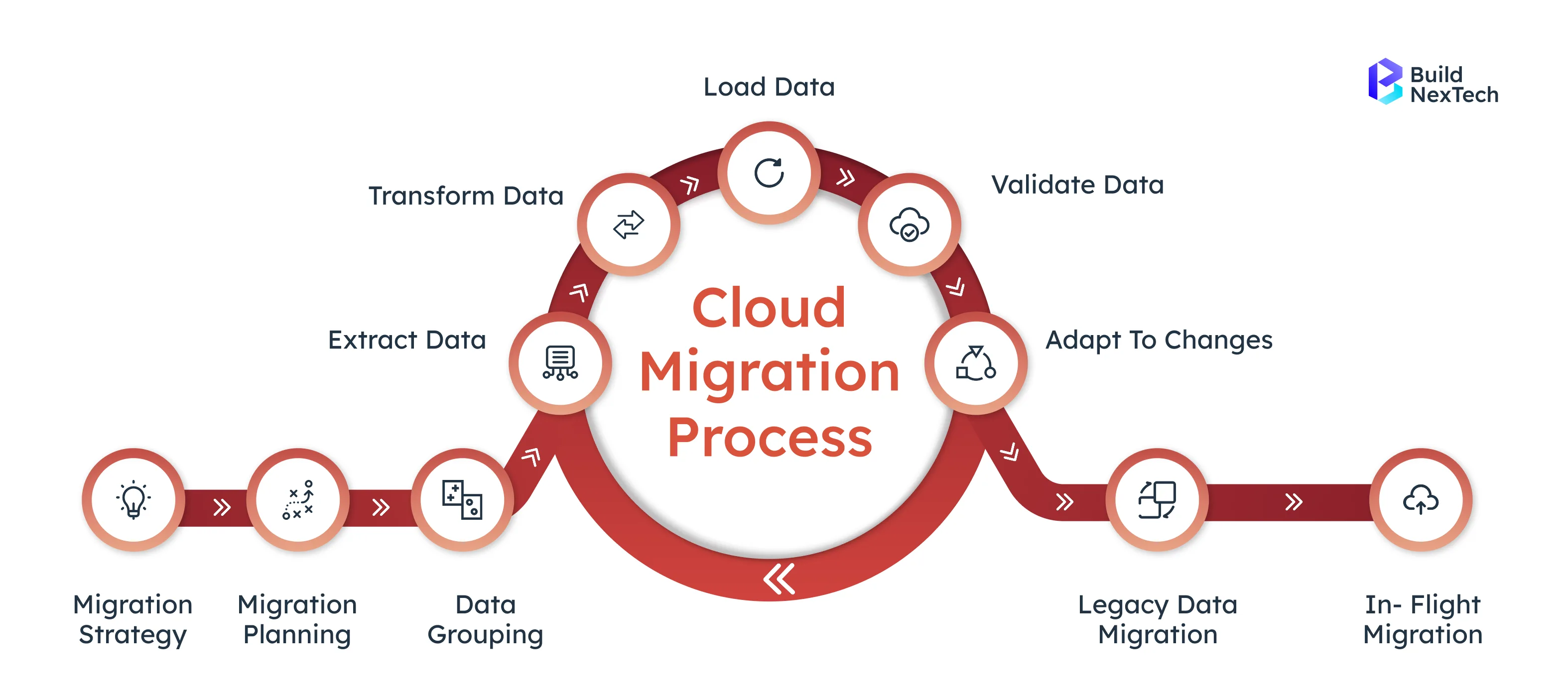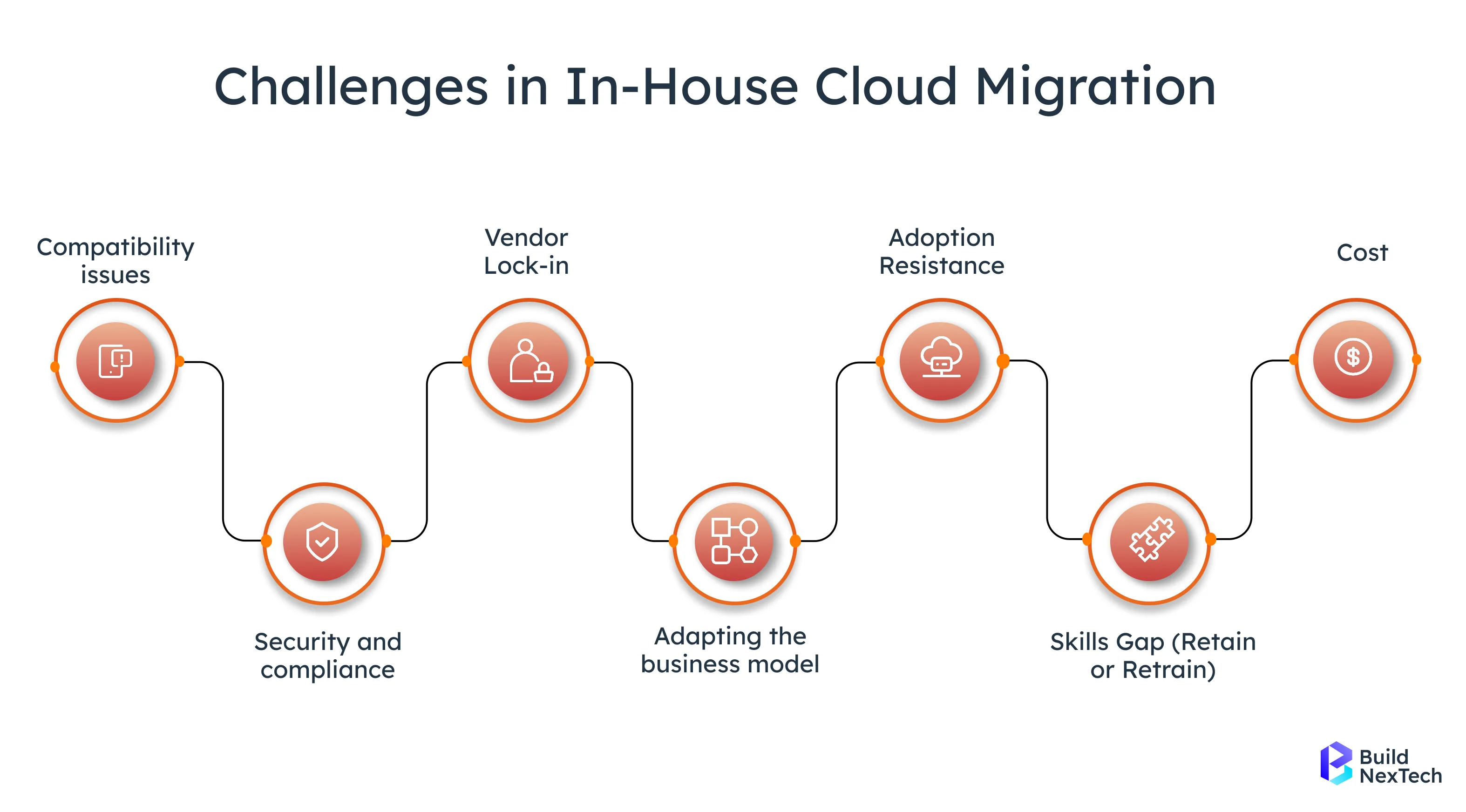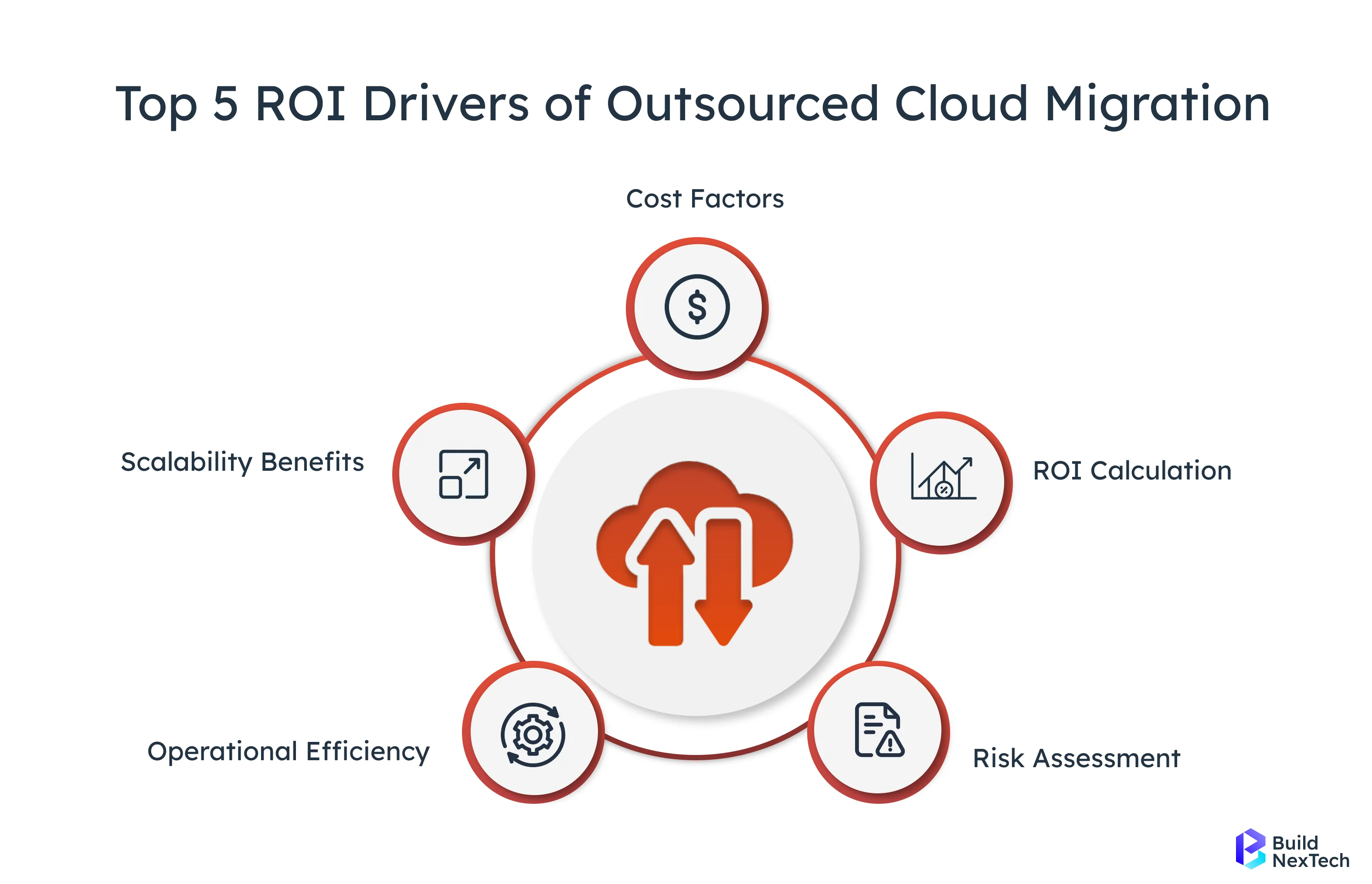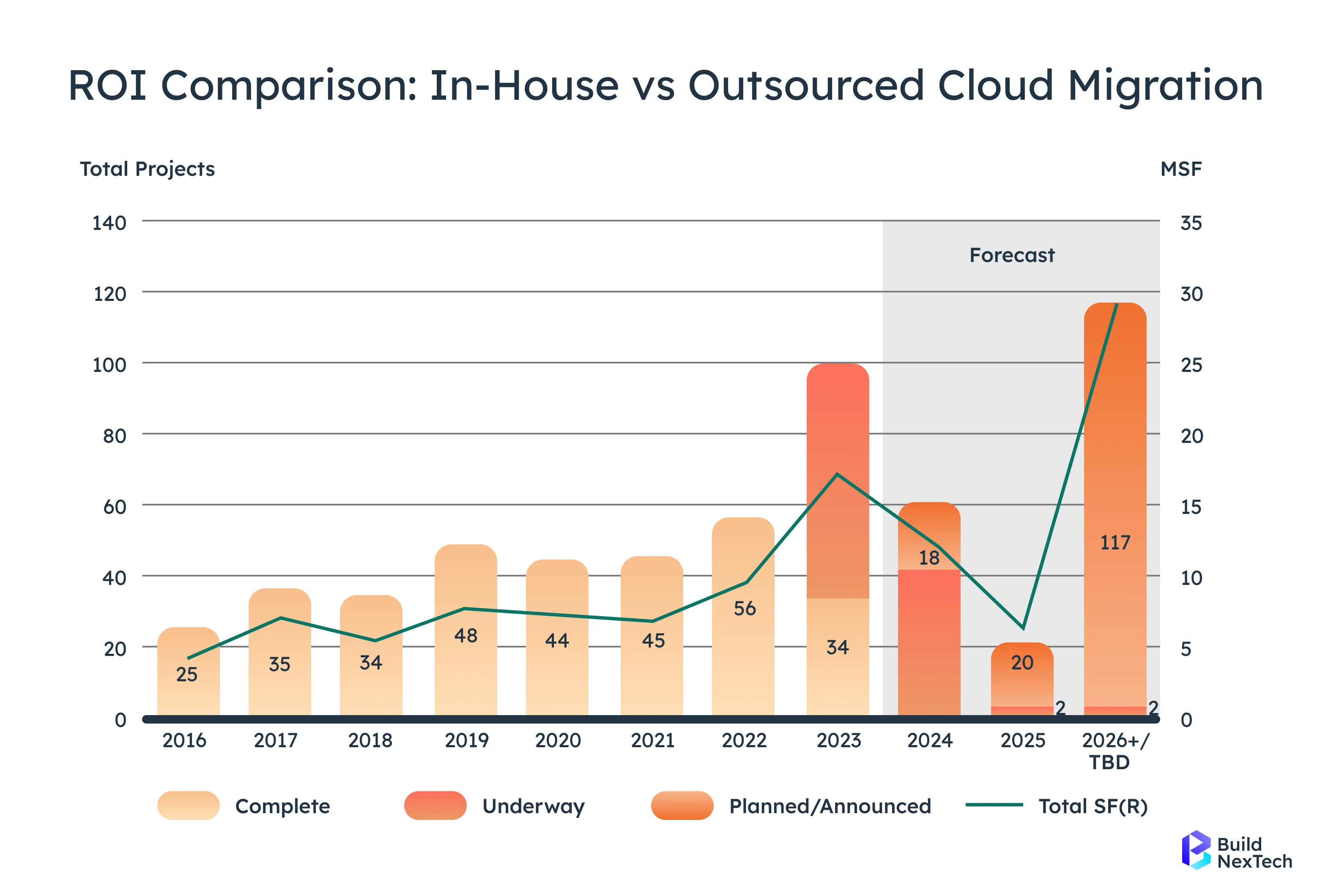Migrating to the cloud is no longer optional - it’s a strategic necessity. Yet, one critical decision still defines the success of every cloud initiative: Should you manage migration in-house or outsource it to experts?
This single choice influences everything - ROI, cost efficiency, speed, scalability, and long-term resilience. According to Gartner, global cloud spending is projected to hit $679 billion in 2024 and exceed $1 trillion by 2027, reflecting the pace at which enterprises are shifting workloads to the cloud.
In this environment, even minor delays, downtime, or failed migrations can have million-dollar consequences.
That’s why outsourcing cloud migration has gained momentum. Specialized cloud partners bring proven frameworks, automation tools, and end-to-end expertise, helping businesses migrate securely and swiftly - all while optimizing total cost of ownership (TCO).
Meanwhile, in-house teams offer greater control and ownership but often struggle with limited skills, rising costs, and slower execution cycles.
In this blog, we’ll break down both models, compare their ROI, and explain why, by 2025, most enterprises are leaning toward outsourced cloud migration for faster, more scalable, and ROI-driven transformations.
✅ What You’ll Learn in This Blog
- What in-house vs outsourced cloud migration really means
- ROI comparison - cost, speed, downtime, scalability, and long-term returns
- The 5 key reasons outsourcing delivers superior ROI
- Security, compliance, and vendor lock-in considerations
- FAQs based on real People Also Ask (PAA) insights
👉 Already exploring cloud solutions?
Discover how BNXT’s Cloud Migration Services empower enterprises to accelerate digital transformation with custom web development, enterprise mobile app development services, and AWS cloud migration expertise.
What is Cloud Migration?
Cloud migration is the process of moving applications, data, and IT infrastructure from on-premises systems to a cloud environment such as AWS, Azure, or Google Cloud. It can also mean transferring workloads from one cloud to another, often referred to as cloud-to-cloud migration.
The rise in demand for scalability, reduced IT costs, and business continuity has made cloud migration a strategic priority for enterprises worldwide. According to IDC, more than 750 million cloud-native applications will be created by 2025, making cloud migration frameworks critical for competitiveness (IDC Report).
Cloud migration is not a single step but a multi-stage process, usually involving:
- Assessment: Identifying existing workloads and dependencies.
- Planning: Creating a migration roadmap.
- Execution: Using cloud migration tools and automation.
- Optimization: Managing costs, security, and scalability post-migration.
Enterprises often rely on cloud migration services and consulting partners to reduce risks such as downtime, data loss, and compliance gaps.
The first step in any successful migration is a thorough cloud migration assessment. This involves analyzing workloads, dependencies, and security requirements before creating a clear cloud migration plan.
Why Businesses Are Moving to the Cloud in 2025
In 2025, the cloud is no longer seen as just an IT upgrade - it has become the foundation of modern business strategy. Organizations are rapidly shifting to the cloud because it directly impacts profitability, scalability, and competitiveness in a digital-first economy.
One of the biggest drivers is cost optimization. Traditional on-premise infrastructure demands heavy upfront investments in servers, storage, and maintenance. By contrast, a well-defined cloud migration strategy allows enterprises to replace these fixed costs with flexible, pay-as-you-go models. This financial agility enables companies to allocate more resources toward innovation rather than infrastructure.
Another factor is speed and agility. Cloud platforms, supported by proven cloud migration frameworks and advanced cloud migration tools, give organizations the ability to launch new applications, scale workloads, and respond to market shifts in weeks instead of months. This agility is critical in industries where time-to-market defines competitive advantage.
Resilience and business continuity also play a central role. Downtime and data loss can cost millions, and businesses can’t afford such risks. Through the support of cloud migration consulting partners and ongoing cloud managed services, organizations gain built-in disaster recovery, compliance assurance, and around-the-clock monitoring.
Finally, enterprises are embracing the cloud for scalability and future readiness. With customer demands and data volumes growing at exponential rates, cloud environments make it possible to expand capacity instantly without investing in new hardware. This scalability ensures that businesses are not just reacting to growth but are prepared to seize new opportunities.
In short, enterprises are moving to the cloud in 2025 because it is the most effective path to achieve cost efficiency, operational resilience, scalability, and faster ROI - all of which are critical in today’s highly competitive landscape.
Types of Cloud Migration (Public, Hybrid, Multi-Cloud)
- Public Cloud Migration - Moving workloads to shared cloud platforms like AWS, Azure, or GCP.
- Private Cloud Migration - Transitioning workloads into a dedicated, private environment.
- Hybrid Cloud Migration - Combining on-premise and public cloud resources.
- Multi-Cloud Migration - Distributing workloads across multiple providers for resilience and flexibility.
Each model requires a unique cloud migration strategy, and enterprises often compare in-house vs outsourced cloud migration to determine which delivers better ROI.

What is In-House Cloud Migration?
In-house cloud migration refers to the process where a company uses its internal IT team to plan, execute, and manage the shift of applications, data, and infrastructure to the cloud. Instead of depending on external partners, the responsibility lies entirely with the organization’s internal resources.
While this model offers greater control and direct communication, it also requires significant investment in training, cloud migration tools, and infrastructure management. Many businesses underestimate the hidden costs of building an internal migration capability, which often affects their ROI.
According to Flexera’s 2024 State of the Cloud Report, more than 60% of enterprises cite lack of internal expertise as a key barrier in executing cloud migration effectively (Flexera). This explains why companies carefully evaluate whether in-house migration is sustainable for long-term goals.
Advantages of In-House Cloud Migration
- Full control over decision-making, processes, and data handling.
- Direct communication between teams with no external dependencies.
- Internal expertise growth through training and hands-on experience.
- Suitable for organizations with stable workloads and lower scalability needs.
Limitations & Challenges of In-House Cloud Migration
- High costs: Training, infrastructure, and hiring skilled professionals.
- Time-intensive: Longer onboarding and execution timelines.
- Skill gaps: Cloud migration frameworks require advanced expertise.
- Scalability issues: Scaling resources internally can be slow and costly.
- Risk exposure: Missteps in strategy may lead to downtime or compliance risks.
Enterprises with limited IT budgets often find outsourcing more practical, as outsourced cloud migration services deliver faster, cost-efficient results.
👉 Learn how scaling challenges can affect ROI in our Horizontal vs Vertical Scaling Guide.

What is Outsourced Cloud Migration?
Outsourced cloud migration means hiring an external partner or managed service provider (MSP) to plan and execute the transition of workloads to the cloud. Instead of building in-house capacity, organizations leverage specialized expertise, automation tools, and proven frameworks offered by outsourcing vendors.
The biggest advantage is speed-to-ROI. According to Accenture, companies that partner with third-party providers achieve migration 30 - 40% faster and reduce operational costs by up to 35%.
This approach is especially popular among enterprises with large, complex workloads or those that need business continuity with minimal downtime.
Benefits of Outsourcing Cloud Migration
- Specialized expertise in AWS, Azure, and multi-cloud platforms.
- Proven migration frameworks with automation capabilities.
- Reduced risks of downtime and compliance errors.
- Cost efficiency compared to training and maintaining internal teams.
- Scalability & flexibility with on-demand resources.
Common Risks of Outsourced Cloud Migration
- Reduced direct control over day-to-day decision-making.
- Communication challenges with external vendors.
- Vendor lock-in risks if contracts aren’t negotiated carefully.
These risks can be mitigated by clear Service Level Agreements (SLAs), vendor evaluation, and hybrid approaches.
When Outsourcing Makes More Sense Than In-House
Outsourcing is often the better choice when speed, expertise, and cost predictability are essential.
1) Limited internal expertise
If your IT team lacks experience with cloud migration tools or conducting a thorough cloud migration assessment, outsourcing provides immediate access to certified professionals and proven cloud migration frameworks.
2) Need for faster execution
When time-to-market is critical, external providers accelerate the cloud migration process using automation, reducing downtime and delivering quicker cloud migration ROI.
3) Cost efficiency and flexibility
Instead of heavy upfront investments, cloud outsourcing services convert costs into flexible OpEx models. The cloud outsourcing benefits include reduced training expenses and predictable billing.
4) Complex scaling requirements
Hybrid and multi-cloud projects often exceed in-house capabilities. A trusted cloud migration partner brings the scalability, support, and risk management needed for large, complex migrations.
In these scenarios, outsourced cloud migration aligns better with business goals, offering faster returns and reduced risks compared to in-house efforts.
Comparing ROI: In-House vs Outsourced Cloud Migration
The ROI of cloud migration depends on both the speed of execution and the long-term cost structure. The key difference between in-house and outsourcing lies in how resources, skills, and risks are managed.
In-House Cloud Migration ROI
- Higher upfront costs (CapEx): Training teams, purchasing cloud migration tools, and building internal frameworks.
- Slower timelines: Internal teams often lack experience, leading to delays.
- Limited scalability: Adding capacity requires new hires or infrastructure.
- ROI depends on workload stability: Works better for predictable, smaller projects.
Outsourced Cloud Migration ROI
- Lower cost of errors and downtime: Outsourcers apply proven cloud migration best practices and frameworks.
- Faster time-to-value: According to Accenture, outsourcing delivers migrations up to 40% faster and reduces costs by 30 - 35%.
- Scalability on demand: With cloud outsourcing services and cloud migration support, resources scale instantly across hybrid or multi-cloud environments.
- Higher ROI potential: Independent cloud migration ROI analysis shows outsourcing maximizes both short-term efficiency and long-term returns.
- Many enterprises evaluate cloud outsourcing vs in-house models not only on cost but also on scalability, compliance, and risk management factors
👉 Without a clear cloud migration roadmap, in-house migrations often suffer from hidden costs and risks. In contrast, outsourcing provides predictable models, better scalability, and higher ROI.
Cost Breakdown: CapEx vs OpEx
- In-House: Heavy CapEx - hiring, training, tools, infrastructure. Hidden costs include staff turnover and delays.
- Outsourced: More predictable OpEx - pay-as-you-go service models, scalable pricing, no major upfront investment.
- Companies outsourcing often cut migration costs by 20 -35%, according to McKinsey.
Speed, Downtime & Business Continuity Impact
- In-House: Delays common due to skill shortages. Longer timelines = higher downtime.
- Outsourced: Vendors use cloud migration frameworks & automation tools to reduce downtime. Accenture reports up to 40% faster migration cycles with outsourcing .
- Faster deployment = quicker ROI.
Scalability & Long-Term Efficiency
- In-House: Scaling workloads requires hiring more staff and upgrading infra → high costs, slow response.
- Outsourced: Flexible, on-demand resources scale instantly with business needs. This is especially critical for multi-cloud migration and hybrid environments.
- For global enterprises, IT outsourcing cloud models provide the flexibility to scale workloads instantly across regions without building costly internal infrastructure.
- IDC predicts 70% of enterprises will adopt multi-cloud strategies by 2025 .
ROI Analysis: Which Delivers Better Returns?
In-House ROI → For companies with stable and predictable workloads, in-house migration may seem appealing because it provides full control over processes and security. However, the trade-offs are significant: higher upfront cloud migration cost, slower execution, and the constant need for new training and infrastructure. Even with a clear cloud migration roadmap, in-house models often struggle to deliver ROI quickly.
Outsourced ROI → By contrast, outsourcing leverages specialized expertise, cloud migration frameworks, and proven cloud migration best practices to accelerate the cloud migration process.Vendors also provide ongoing cloud managed services and cloud migration support, ensuring long-term ROI through scalability and resilience.
Most enterprises in 2025 are turning to outsourced cloud migration or hybrid approaches because they combine cost flexibility, faster time-to-value, and risk reduction. Independent cloud migration ROI analysis - supported by tools like a cloud ROI calculator - consistently shows that outsourcing delivers higher returns, particularly for complex hybrid or IT outsourcing cloud environments.
Independent cloud migration ROI analysis highlights that outsourcing consistently delivers higher returns in hybrid and multi-cloud environments.
Tools like a cloud ROI calculator help organizations estimate cost savings and compare in-house vs outsourced strategies before making final decisions.
👉 See how ROI-driven migration works in practice in our Predictive Analytics Case Study.

5 Reasons Outsourced Cloud Migration Often Outperforms In-House
For most enterprises, outsourced cloud migration delivers stronger ROI compared to in-house approaches. The reasons go beyond cost - outsourcing reduces risks, accelerates timelines, ensures compliance, and provides scalability. According to Forrester, organizations that partner with external vendors achieve faster modernization and up to 3x ROI within three years .
Here are the top five reasons why outsourcing outperforms in-house migration:
Specialized Expertise in Cloud Platforms
- Certified experts in AWS cloud migration, Azure, and Google Cloud bring advanced technical knowledge.
- Outsourcing partners handle multi-cloud and hybrid environments with ease.
- In contrast, in-house cloud migration often struggles due to skill shortages.
- A Flexera report found that 63% of enterprises list lack of internal expertise as the top barrier.
- This gap is why many turn to cloud migration consulting and enterprise cloud migration services.
Proven Migration Frameworks & Best Practices
- Vendors follow cloud migration frameworks and proven cloud migration best practices.
- These methods minimize risks like downtime and compliance gaps.
- In-house teams often build their own cloud migration roadmap, leading to inefficiency.
- The lack of structure increases cloud migration cost and delays projects.
Gartner notes that structured frameworks reduce failures by 40% .
A well-structured cloud migration plan, combined with a detailed cloud migration roadmap, ensures that workloads are prioritized correctly and executed with minimal disruption.
Scalability & On-Demand Resources
- Cloud outsourcing services allow instant scaling of workloads.
- Enterprises gain agility in hybrid and multi-cloud environments.
- Cloud outsourcing benefits include predictable billing and reduced overhead.
- Vendors offering cloud managed services ensure flexibility and continuity.
- Additional cloud migration support enables faster adaptation to business changes.
Faster Execution With Automation Tools
- Outsourcing partners use AI-driven cloud migration tools and automation platforms.
- These accelerate the cloud migration process significantly.
- In-house teams relying on manual methods take longer and face more risks.
- Accenture research shows outsourcing with automation completes migrations 30 - 40% faster .
- This speed directly improves cloud migration ROI.
Focus on Core Business Operations
- Outsourcing frees up internal IT teams from migration tasks.
- Staff can focus on core business priorities and innovation.
- This shift accelerates digital transformation and productivity.
- Outsourcing thus drives both ROI and long-term competitive advantage.

How to Choose the Right Cloud Migration Approach
Choosing the right cloud migration approach depends on your internal capabilities, business goals, and long-term digital roadmap. Companies must carefully evaluate whether to invest in building in-house expertise or rely on outsourced partners like AWS cloud migration experts.
Evaluating Internal Capabilities vs Outsourced Skills
- In-House: Works best when organizations already have enterprise web development services or enterprise mobile app development services teams with cloud knowledge.
- Outsourced: Ideal when the business wants faster results with minimal risk. Vendors bring custom web development and custom mobile app development expertise to re-engineer applications for cloud-native performance.
- According to Deloitte’s Global Outsourcing Survey, 63% of organizations report cost reduction as a key benefit of outsourcing, while 65% say outsourcing allows them to focus on core business functions. This demonstrates why many enterprises prefer outsourcing over relying solely on in-house models when pursuing cloud transformation.
Hybrid & Phased Migration Models
- Many enterprises adopt a hybrid approach → keeping critical workloads in-house while outsourcing high-risk or complex projects.
- Phased migrations allow testing with small workloads before scaling.
- This model balances control + expertise + scalability.
👉 At BNXT, we combine custom web development and enterprise mobile app development services with cloud consulting to help businesses modernize applications while migrating seamlessly. Explore our Cloud Services to see how we deliver ROI-driven transformations.
Final Thoughts on Cloud Migration ROI in 2025
The choice between in-house vs outsourced cloud migration is no longer just about cost - it’s about speed, scalability, risk management, and ROI.
- In-house migration gives businesses full control but requires high investment in training, infrastructure, and tools.
- Outsourced migration, supported by AWS cloud migration experts and consulting partners, often delivers faster results, lower risk, and stronger ROI.
For most enterprises in 2025, a hybrid approach - balancing internal capabilities with external expertise - offers the best of both worlds. The goal should always be to maximize ROI, reduce downtime, and accelerate digital transformation.
👉 Looking to modernize your applications while migrating to the cloud? Explore our Enterprise Web Development Services and see how BNXT helps companies combine custom web development with cloud migration consulting for long-term growth.
People Also Ask
What is the ROI of outsourcing cloud migration compared to in-house?
Outsourced cloud migration typically delivers 25–35% lower costs and 30 -40% faster deployments compared to in-house teams.
Is outsourcing cloud migration faster than internal migration?
Yes. Outsourcing partners use automation tools and migration frameworks to reduce downtime, completing migrations up to 40% faster.
How much does outsourced cloud migration cost vs in-house?
In-house requires heavy CapEx (training, tools, infra), while outsourcing is more OpEx-based with flexible pricing. McKinsey estimates outsourcing saves 20 - 30% of migration costs .
What risks come with outsourcing cloud migration?
Main risks include vendor lock-in and reduced day-to-day control. These can be mitigated with SLAs and multi-cloud strategies.


























.webp)
.webp)
.webp)

